Eustace Chapuys - Tumblr Posts
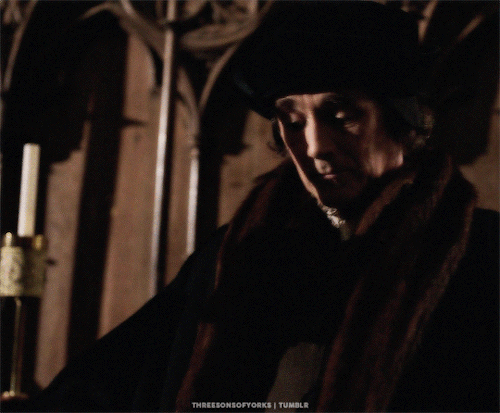

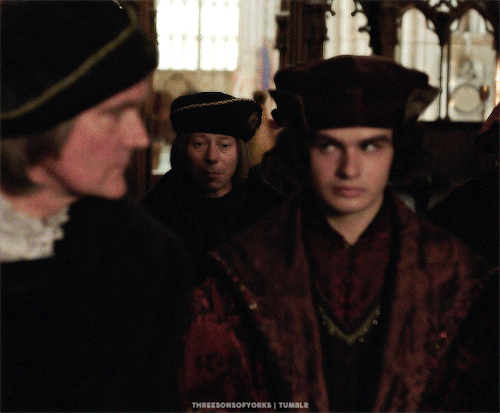




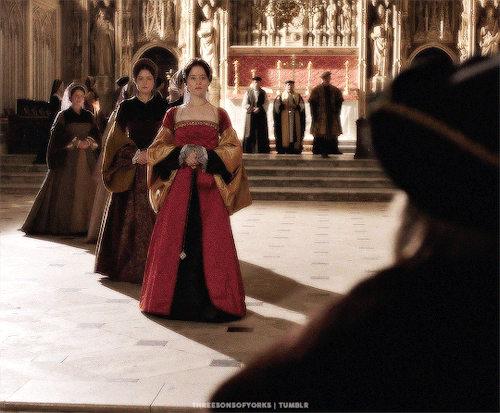
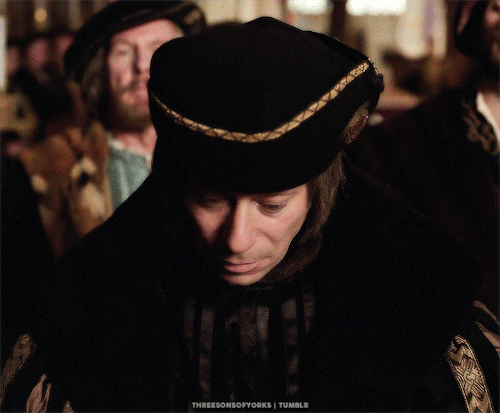
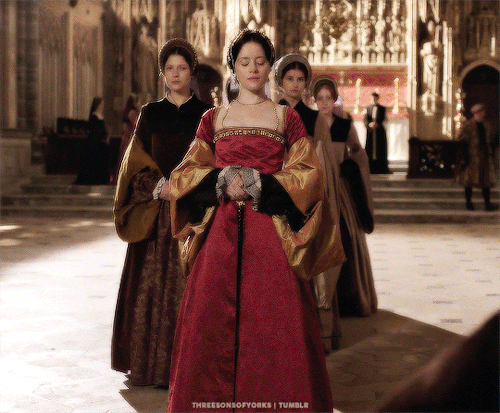

Anne Boleyn 🫱🏼🫲🏻 Thomas Cromwell — making fool of Chapuys WOLF HALL (2015) | 1x05
Among the little crowd that watched her go on board stood Eustace Chapuys, but she did not recognise him; it must have been some years since they had met, and besides he was in disguise; one would be glad to know what disguise. But he saw her, and reported in demure diplomatic style to the Emperor that it had been “a pleasure to see such excellent beauty and heroic bearing. Behind the words, and behind his daily cheering letters to her, behind all his passionate labours in her behalf, there was perhaps more than political feeling. It almost seems as if the Savoyard was the only man who ever felt for Mary a touch of romantic devotion, half for her royalty, half for her womanhood.
Prescott- Spanish Tudor (via lovelyladymarycrawley)
Mackay writes with a dynamic and confident style, which is lively and engaging. Academic readers, though, are perhaps not her foremost audience. Although well-versed in Tudor historiography, Mackay is not concerned with contemporary scholarly questions that surround the new history of diplomacy, gender and masculinities, or the history of emotions, all of which could enrich the work. There is little consideration of the constructed nature of Chapuys’ accounts, as potential acts of self-fashioning that occur through the rhetoric of epistolary content, the material apparatus of the letter and in his actions. This descriptive analysis of Tudor court life treats Chapuys’ accounts largely at face value. How do we understand his claims to knowledge control through a wide network of informants or accounts to Charles of his evenly-matched verbal jousts with Henry VIII?
Inside the Tudor Court: Henry VIII and his Six Wives through the Writings of the Spanish Ambassador Eustace Chapuys by Mackay, Lauren (review). Susan Broomhall.


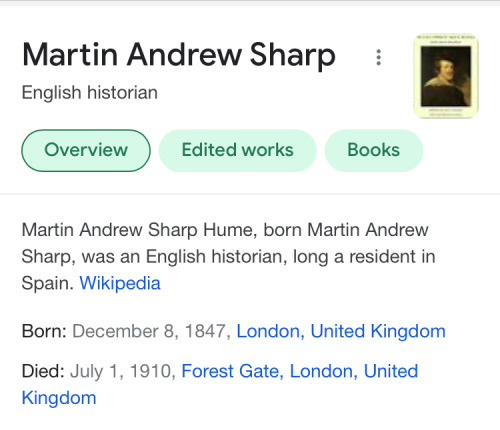
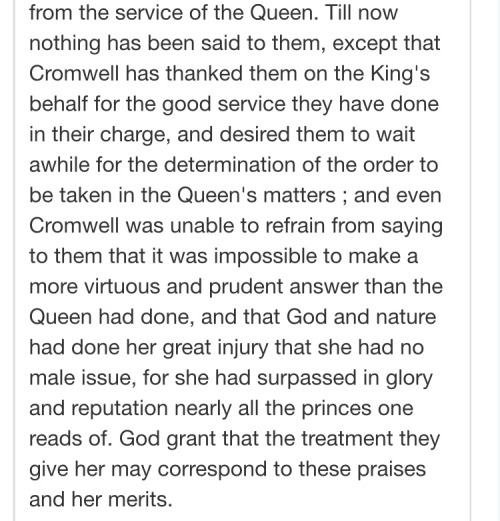
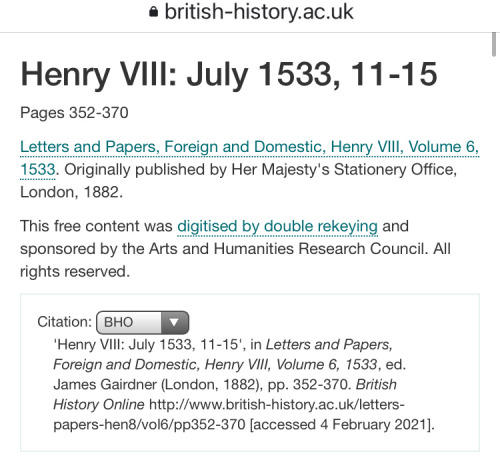
For just on sixteen years, Eustace Chapuys was the eyes and ears of the Habsburg empire at the Tudor court, writing copious missives on a tumultuous period to Charles V, Mary of Hungary, and, eventually, Charles’s son, Philip. Chapuys’ two missions, from 1529 to 1545, initially saw him charged with defending, unsuccessfully, the claims of Charles’s aunt, Katherine of Aragon, as rightful Queen of England against Henry VIII’s planned annulment, and then, as Mackay argues, as lone champion for her daughter Mary, who was abandoned, in practical terms, even by her cousin Charles. The appointment brought Chapuys into close and regular encounter with a changeable monarch, a number of queens, an evolving line-up of administrators, fellow diplomats, ladies-in-waiting, and merchant communities, whom Chapuys appeared to convince to provide a wealth of information for the Imperial cause. Chapuys, a legally-trained man of the middling sort schooled in the humanist tradition, held admiration, it seems, for others regardless of their religious persuasion, and enjoyed sociable relations most notably with Thomas Cromwell.
Inside the Tudor Court: Henry VIII and his Six Wives through the Writings of the Spanish Ambassador Eustace Chapuys, by Mackay, Lauren (review). Susan Broomhall.
Chapuys’ epistolary prose provides the thread through the text. It is unclear if Mackay has translated these works afresh; the calendars are cited heavily among other, archival sources and original wording is not provided in the notes. The short introduction is limited to addressing the question of Chapuys’ accuracy as an eye-witness, recognizing his biases but rightly defending his importance as a source for the period. The work could certainly have benefitted from a conclusion separate from the last chapter, positioning Chapuys in the wider context of his time, among his fellow ambassadors. This would have made a stronger, analytical argument for his significance and value, beyond repeated assertions about the colour and life that his letters breathe into the court.
Inside the Tudor Court: Henry VIII and his Six Wives through the Writings of the Spanish Ambassador Eustace Chapuys, by Mackay, Lauren (review). Susan Broomhall.
“Henry’s line of conduct toward his first wife and daughter was so detestable that it tends to blind us to the fact that his victims were guilty of some very doubtful transactions with the enemies of the head of the State, whom the majority of his subjects showed no desire to get rid of. Chapuys, who abused his ambassadorial position to discuss with the malcontents the possibilities of risings in England and the substitution of Reginald Pole for Henry on the throne, who encouraged his master to think of invading England […] was the unceasing inspirer of Katharine and Mary to defy Henry’s commands. They were certainly justified in refusing to recognize the King’s right to repudiate them. But to have dealings with conspirators aiming to attack England from outside was something more than a maintenance of their rights as wife and daughter. We only know of their dabbling with treason through the confessions of their own chief friend. Cromwell, in spite of the activities of his spies, did not succeed in tracking the plot.”
— The Life of Anne Boleyn (1924), Philip W. Sergeant
Okay, I don’t usually add to these bcus they’re fandom-related , but given this one is making actual historic claims ....
1) To say ‘even if we ignore Chapuys’ claims’ and then cite the example of the christening cloth .... that comes from Chapuys. And no other. Idk if anon is aware of that , but ... yeah. Something to think about .
2) It wasn’t her coat of arms (her coat of arms was a falcon, but that was her family’s heraldry), it was actually embroidery that has been attributed to Elizabeth Howard (her mother) most recently by historians , that depicted what you mention :
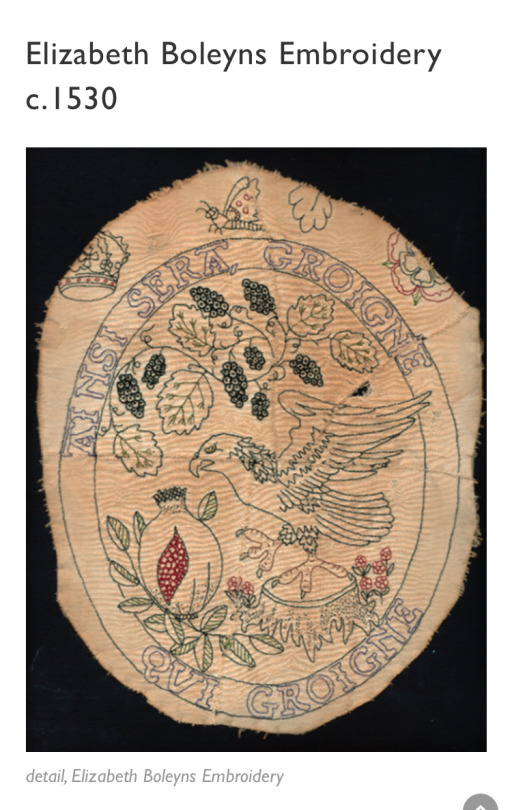
Here are her coat of arms
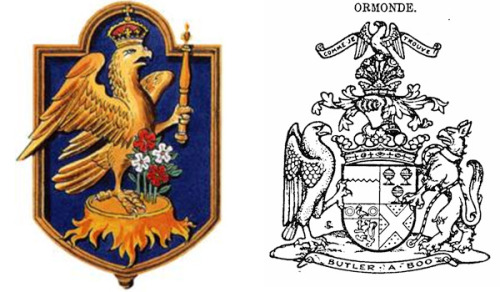
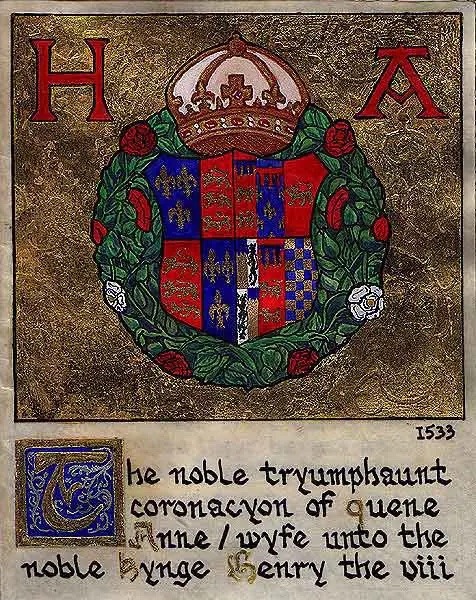
No pomegranate , as you can see. To have put that in actual official heraldry would have been very odd .
3) If you don’t like Anne Boleyn, that is of course , your prerogative. But it is true that the bulk of the contemporary reports about her that are negative come from Chapuys. There are some from other diplomats that are also not positive , but his are where there is the highest volume of negative reports about her. Whether or not you take them at face value , totally disregard them, or somewhere in between (my personal recommendation) is totally up to you.
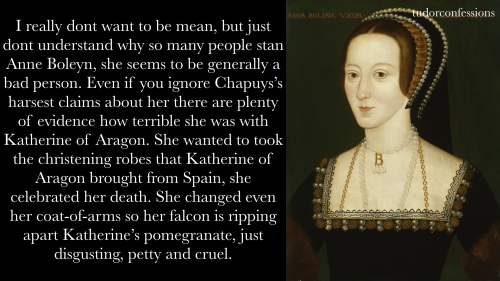
Idk if I explained that well, but I don’t totally disregard Chapuys as a source at all— what I don’t like is the treatment of him as an infallible source, something Lauren MacKay has unfortunately contributed to. Chapuys got things wrong sometimes, to take all his reports at face value and not compare them to what other contemporaries were saying at the same time is going to lend itself to an extremely myopic view of the Tudor court and its major players.
“For three years of Anne’s reign, Chapuys’s correspondence had been filled with predictions of rebellion. Now, five months after her death, the predictions were fulfilled. First Lincolnshire and then the north rose in revolt. The rebels found a charismatic leader in Robert Aske […] [and they formed a list of demands]. The monasteries were to be restored. Mary was to be declared heir. Cromwell, Rich, and Audley were to be executed or at least exiled. And Anne’s heretic bishops, Cranmer, Latimer, Shaxton, and Hilsey, were to be burned.”
— The Queens of Henry VIII, David Starkey (via madamedepembroke)
1530:
“ ‘That matters not, for it is foretold in ancient prophecies that at this time a Queen shall be burnt: but even if I were to suffer a thousand deaths, my love for you will not abate one jot.’ ” -- Anne Boleyn (alleged, by Chapuys)
1536:
“[...] begged the royal messenger to entreat the King in her name to consider that she was a well-born damsel, the daughter of good and honourable parents without blame or reproach of any kind; there was no treasure in this world that she valued as much as her honour, and on no account would she lose it, even if she were to die a thousand deaths.” -- Jane Seymour (alleged, by Chapuys)
A particular instance in which Chapuys should not be taken as the most reliable source is in regards to Catherine’s housing in the years she was kept separated from the king and court. Catherine would constantly write and complain about her misery and the terrible conditions she endured, but in reality, she was kept in comfortable residences. When she was first sent away, she was sent to The More, one of Cardinal Wolsey’s former residences. It was showing some signs of neglect, but had been refurbished by the Cardinal and had been considered a magnificent residence just a few years before. Catherine was also allowed to retain a large household, including numerous ladies-in-waiting, and including her old friend, Maria de Salinas. Although she was moved numerous times in the last years of her life, she was always housed in relatively pleasant residences.
Politics and Religion During the Rise and Reign of Anne Boleyn, Megan E. Scherrer